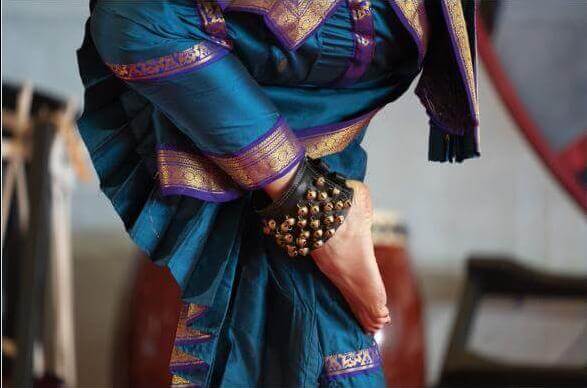Author: Randeep Singh / go to all Samkhya Karikas

Samkhya Karika 59 Text:
Rangasya darshyitvaa nivartate narttakee yathaa nrityaat |
Purushasya tatha atmaanam prakaashya vinivartate prakritih ||
Rangasya – the audience
Darshyitvaa – having shone, exhibited
Nivartate – comes to end, ceases
Narttakee – female dancer
Yathaa – just as
Nrityaat – from the dance performance
Purushasya – to the Purusha
Tatha – Similarly
Atmaanam – by herself
Prakaashya – having revealed
Vinivartate – ceases
Prakritih – Prakriti
Samkhya Karika 59 explains the fact that the activities of Prakriti are not meant to be going on for ever. The activities of Prakriti which it continously displays for the Purusha to be an audience to comes to an end when the Purusha is finally liberated from its (Prakriti) bindings.
Samkhya Karika 59, Prakriti is like a Stage Dancer before Purusha
Samkhya karika 59 compares the activities of Prakriti which it displays before the Purusha to the dance of a female dancer on stage who performs before an audience.
As the dancer on the stage stops dancing one’s her performance is complete, the dance (various daily activites) of Prakriti comes to completion (stoppage) when the Purusha has attained liberation from its shackles (attachments and desires to the material world).
The dance of Prakriti includes its display of varous experiences which emerge from the various dimensions of Buddhi, Ahamkara, tanmatras and mahabhutas get translated into experiences via different interpretation of Buddhi based on the dimension it is existing in that moment of time.
The entire Prakriti (material universe) displays itself before Purusha in the myriad of activities which gives an impression of a dance of Prakriti when taken together.
Once the purpose of existence of Prakriti is met, the associated Purusha has attained liberation from the material universe, it ceases all its activities. This ceasure of activities of Prakriti happens only for the individual Purusha which has attained freedom from it, or for a single individual only.
A single human being is composed of both; Prakriti (physical, material body) and Purusha. Each Individual body (Prakriti) needs to individualy work to help the Purusha associated with it achieve liberation.
We have often been told to “be an observer”, like a “witness “. Easier said than done.
Yoga teaches us to sit in silence and so does Samkhya. But the worldly things and the environment around us has made us forget our real entity. It is only when we are old and this body is ready to leave does some understanding dawns.
But the enlightened saints are different. Sant Tukaram was interested in spiritualism since childhood. However, he became a householder and managed his father’s business. He experienced pain, pleasure, witnessed tragic events in his life but grew wiser. He realised the play of Prakrti andcontinued his work. He wrote a lot of hymns and remained deeply devoted to God. There were many who were jealous of him and forced him to sink his works in the river. However, in time many realised his saintliness and the world now sings his compositions.
We are so engrossed in the worldly affairs that there is no inclination to learn the Truth. After a lot of suffering, some beginning is made but then that too is at the peripheral and we lose momentum after sometime. Wise is one who develops a perfect understanding after going through a little bit of pain. He then develops an understanding and doesn’t suffer.
Case of Gender in Samkhya Philosophy
One must wonder that Prakriti has been assigned a feminine gender by the author of Samkhya philosophy since it is being compared to a female dancer in this Samkhya karika 59. Purusha on the other hand seems to be the masculine gender by way of translating it’s Hindi version to English.
Samkhya philosophy no where mentions gender division between Purusha nd Prakriti. Rather, it treats the human being as a single entity; complete with the body (Prakriti) and the consciousness (Purusha) taken together.
Both have their individual roles to execute. Prakriti, in this particular karika is being comparedto female dancer because in the time when these karikas were being composed it was common for courtesans (accomplished female dancers) to perform before royal as well as public audience.
This comparison is just an imprint of the culture and society of those times. It has nothing to do with Prakriti being the feminine gender and the Purusha the masculine one.
Samkhya Philosophy is generally open to all, without any demarcations of proffession or caste (varna) of the Brahmanical order prevalent in that era.
